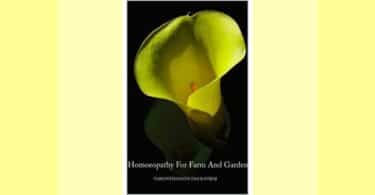 My initial impression was what a lovely looking book this is with its bold and bright cover and easy to read print scattered with drawings and tables! It begins with the foreword which explain why they have written this book and tells us that the first part of the book is a description of ADHD and that the second part is devoted to homeopathy.
My initial impression was what a lovely looking book this is with its bold and bright cover and easy to read print scattered with drawings and tables! It begins with the foreword which explain why they have written this book and tells us that the first part of the book is a description of ADHD and that the second part is devoted to homeopathy.
Part 1
Chapter 1 – explains what ADHD is, its signs and symptoms and very importantly in my opinion related conditions. Also included are 5 neuropsychological models of the condition.
Chapter 2 – gives the childhood symptoms of ADHD and describes the 3 different types dependant on the strongest symptoms in the individual.
Chapter 3 – is about behaviour therapy for different age groups. This focuses a lot on School management and communications between home and school. The latter can be difficult to achieve plus how to protect your child and I will be giving these excellent tips to the parents of my school age patients with ADHD.
Chapter 4 -this is about Associated Disorders which often run alongside ADHD. The main ones are Oppositional Defiant disorder and Conduct Disorder both of which are discussed at length with symptoms and management. Other disorders discussed are Learning Disabilities, Anxiety and Depression, Difficult peer relationships, Risk of injury and Health Risks. There is much useful and easily usable advice in these pages.
Chapter 5 – concentrates on symptoms and related conditions in adults which are more difficult to identify. The list of possible symptoms numbers 29 of which I am guilty of many of them!! I am pleased to reveal that I don’t think I suffer from any of the “Related Conditions” stated! There is also a page showing pictorially the prevalence of adults aged 18-44 with ADHD in many countries in the world.
Part 2
Chapter 6- ADHD and Homeopathy. The first thing explained is how homeopathy is an individualised therapy and what this means. Next is how rubrics are selected. Related useful rubrics are given for ADHD and also for when anger and aggressive behaviour predominate.
This includes how we may begin with larger generalised rubrics down to deeper more accurate ones. We get the same for 9 different characteristic symptoms including when aggression and abusive behaviour predominate, when learning disabilities are most problematic, when self esteem /forgetfulness/constant worry/ depression are much of the problem. I love the picture of a child and a lion, both with their mouths open roaring and the other representative pictures.
Chapter 7 -Involvement of the constitution in homeopathy remedy selection. Firstly, they divide the patient into an introvert or extrovert according to asking the parent the given specific questions. Brilliant rubrics are given pertaining to each answer.
Then another set of questions is given to find out what the child’s specific problem areas are. Some of these are discussed and relevant rubrics given. Development stages are discussed as are spatial orientation, the mother’s pregnancy, the child’s sensitivity to various things, sweating and reoccurring illnesses.
Chapter 8 – This discusses the most common homeopathic remedies in the treatment of ADHD in alphabetical order. I was sad to see the latest remedy I have prescribed for a difficult 8 year old – Anacardium was not in the list! However only 21 remedies were described.
Chapter 9 – gives 14 long term, short cases of children and adults. Most cases have the headings of mother’s pregnancy, birth, baby development, characteristics, cravings and school. Each case gives the remedy. It also gives Results Score which I didn’t understand as it wasn’t explained at the beginning of the chapter. The number of years follow up was also given.
Chapter 10 –This contains a useful 8 tables of questions to ask on various issues.
Chapter 11 – gives relevant rubrics on various issues including: Hyperactivity, Tics, Learning Difficulties, Calculating, Abuse, Rage ,Violence, Anxiety amongst others.
So my usual end of a review is who is this book aimed at. Basically I would highly recommend this book to any homeopath, student or experienced, who has ADHD patients coming to their clinic. There has certainly been an influx since the isolation that Covid brought about.
I wish I had read this book years ago as it would have helped me. It will certainly help me with my current 3 or 4 child ADHD patients ranging from 8 to 15. It has also given me ideas of what to say to the parents to help them manage what they are going through. I even think it would be helpful for the parents of the children to read Part 1 as there is so much there that they would find most interesting.





